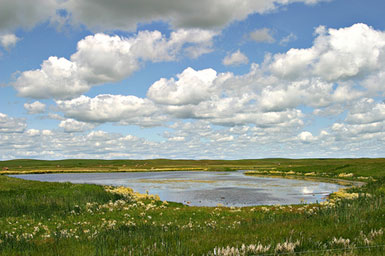If you read our news, you know we keep writing about reversing climate change by re-building soil either through applying compost, moving to organic agriculture or bringing back herds of grazing animals.
Could it be catching on? We’ve heard about three programs – one starting in the US, one in Kenya and another in Australia.
US Begins Carbon Credit Sales from Ranch Grasslands
A new program rewards ranchers for leaving grasslands undisturbed – allowing them to earn money for leaving carbon in the soil. The more carbon in their soil, the more carbon credits they generate, which corporations buy to offset their emissions.
It’s even got a new name, Carbon Farming!
"Ranchers benefit from new revenue streams, while thriving grasslands provide nesting habitat for wildlife, are more resilient to extreme weather, and help mitigate the impact of climate change," says USDA Secretary Tom Vilsack.
Few undisturbed grasslands remain in the US – the ecosystem that’s been shown to sequester the most carbon in the soil.

Using a $161,000 grant from the Department of Agriculture (USDA), Ducks Unlimited developed a way to measure how much carbon grasslands store in the soil.
Under the program, ranchers voluntarily set aside grassland in a permanent conservation easement that allows them to grow hay and graze animals, but forbids tilling or conversion to other uses. Carbon in the soil is measured and formally registered, and then made available to entities that want to purchase carbon credits.
Chevrolet made the first purchase, buying 40,000 credits from grasslands in the Prairie Pothole region of North Dakota. The company’s goal is to buy credits equivalent to reducing 8 million tons of carbon dioxide – the amount a mature forest the size of Yellowstone National Park sequesters.
In October, President Obama announced the Climate and Natural Resources Priority Agenda which uses carbon sinks to mitigate climate change – restoration of forests, grasslands, wetlands and coastal areas. The Farm Bill passed this year finally subsidizes farmers and ranchers only when they preserve wetlands, grasslands and erodable land. Seven regional "climate hubs" are showing farmers how to increase carbon in the soil.
Carbon credit systems are also under development for beef and dairy farms and crop farming.
Australia’s Carbon Farming Initiative
In 2011, Australia’s Parliament passed legislation creating the world’s first nationwide system for carbon credits from farming and forestry industries.
It was folded into the country’s pioneering carbon tax, but that’s been repealed by the new right-wing administration. Carbon farming remains, however, and the Environment Minister believes it can absorb 60% of the emissions needed to meet its now-pathetic goal of cutting Australian emissions 5% by 2020.
Kenya Agricultural Carbon Project
60,000 small farmers on 45,000 hectares are earning carbon credits by increasing organic matter in soils, with the first credits sold this year. Farmers are also finding they get 20% higher yields by improving the soil, helping to counteract increasingly extreme weather.
The program is lead by The World Bank’s BioCarbon Fund, which will also purchase $600,000 worth of carbon credits over the next few years.
Read our article, Sequestering Carbon, Helping Pollinators Along Our Highways.
